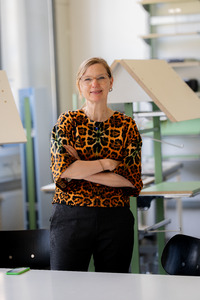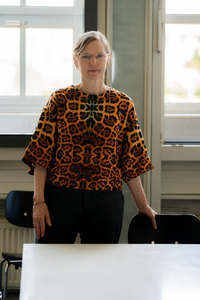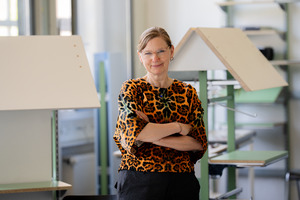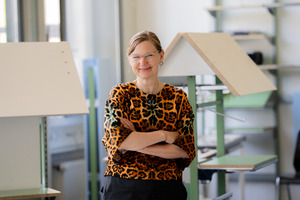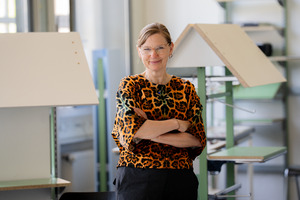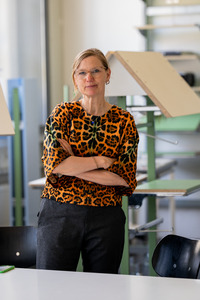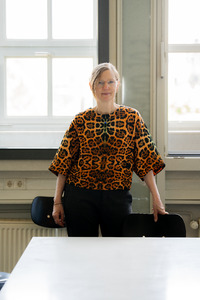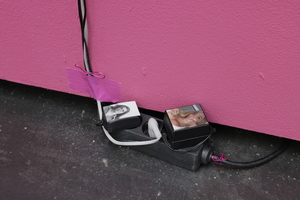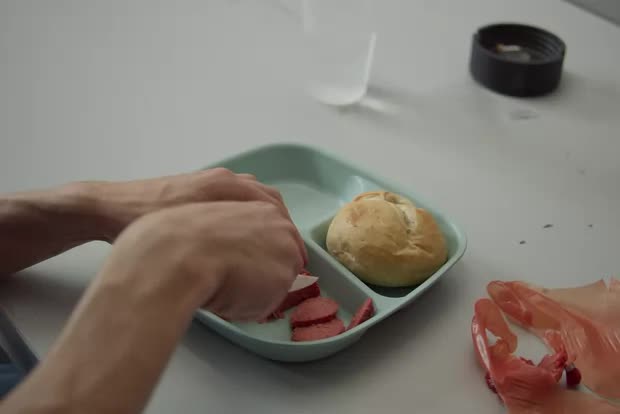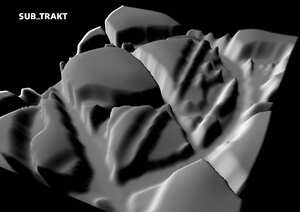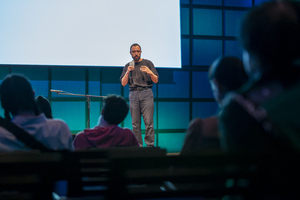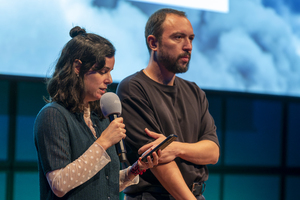Medienobjekt
Alle Inhalte mit Metadaten des Vokabulars "Medienobjekt". Sie sehen nur Inhalte, für die Sie berechtigt sind.
3215 Inhalte
- Seite 1 von 268
Sussanne Kriemann
- Titel
- Sussanne Kriemann
- Titel
- Sussanne Kriemann
- Urheberrechtshinweis
- © Staatliche Hochschule für Gestaltung Karlsruhe Foto: Jehad Othman
- Freigabe Nutzung HfG
- Medienersteller/in
- Studiengang
- Importiert am
- 25.06.2025
- Übergeordnete Sets
- 0
Sussanne Kriemann
- Titel
- Sussanne Kriemann
- Titel
- Sussanne Kriemann
- Urheberrechtshinweis
- © Staatliche Hochschule für Gestaltung Karlsruhe Foto: Jehad Othman
- Freigabe Nutzung HfG
- Medienersteller/in
- Studiengang
- Importiert am
- 25.06.2025
- Übergeordnete Sets
- 0
Sussanne Kriemann
- Titel
- Sussanne Kriemann
- Titel
- Sussanne Kriemann
- Urheberrechtshinweis
- © Staatliche Hochschule für Gestaltung Karlsruhe Foto: Jehad Othman
- Freigabe Nutzung HfG
- Medienersteller/in
- Studiengang
- Importiert am
- 25.06.2025
- Übergeordnete Sets
- 0
Sussanne Kriemann
- Titel
- Sussanne Kriemann
- Titel
- Sussanne Kriemann
- Urheberrechtshinweis
- © Staatliche Hochschule für Gestaltung Karlsruhe Foto: Jehad Othman
- Freigabe Nutzung HfG
- Medienersteller/in
- Studiengang
- Importiert am
- 25.06.2025
- Übergeordnete Sets
- 0
Sussanne Kriemann
- Titel
- Sussanne Kriemann
- Titel
- Sussanne Kriemann
- Urheberrechtshinweis
- © Staatliche Hochschule für Gestaltung Karlsruhe Foto: Jehad Othman
- Freigabe Nutzung HfG
- Medienersteller/in
- Studiengang
- Importiert am
- 25.06.2025
- Übergeordnete Sets
- 0
Sussanne Kriemann
- Titel
- Sussanne Kriemann
- Titel
- Sussanne Kriemann
- Urheberrechtshinweis
- © Staatliche Hochschule für Gestaltung Karlsruhe Foto: Jehad Othman
- Freigabe Nutzung HfG
- Medienersteller/in
- Studiengang
- Importiert am
- 25.06.2025
- Übergeordnete Sets
- 0
Sussanne Kriemann
- Titel
- Sussanne Kriemann
- Titel
- Sussanne Kriemann
- Urheberrechtshinweis
- © Staatliche Hochschule für Gestaltung Karlsruhe Foto: Jehad Othman
- Freigabe Nutzung HfG
- Medienersteller/in
- Studiengang
- Importiert am
- 25.06.2025
- Übergeordnete Sets
- 0
Susan Sontag and Luna Gil – detail
- Titel
- Susan Sontag and Luna Gil – detail
- Titel
- Susan Sontag and Luna Gil – detail
- Urheberrechtshinweis
- © Juliana Vargas Zapata
- Medienersteller/in
- Beziehung/Funktion
- Importiert am
- 03.07.2025
- Übergeordnete Sets
- 1
Sucuk aus dem Wasserkocher
- Titel
- Sucuk aus dem Wasserkocher
- Titel (en)
- 7sqm Inside Views
- Autor/in
- Beschreibung (de)
- Die unterschiedlichen filmische Sequenzen waren als Projektionen im Raum (großes Studio) auf Wänden zu sehen. Sie erzählen von Überlebensstrategien auf engem Raum, von der Subkultur im Gefängnis:
Sucuk aus dem Wasserkocher, Gebetsketten aus Brot,
Apfelbäume aus Joghurtbechern und Duschgel als Raumduft.
Die Sequenzen sind Erzählungen aus dem Interview mit Badaue (Pseudonym). Die zu sehenden Handlungen hat er, während der Zeit der Untersuchungshaft, zum Teil selbst entwickelt, zum Teil von anderen Inhaftierten erfahren.
- Die unterschiedlichen filmische Sequenzen waren als Projektionen im Raum (großes Studio) auf Wänden zu sehen. Sie erzählen von Überlebensstrategien auf engem Raum, von der Subkultur im Gefängnis:
- Beschreibung (en)
- The different film sequences were shown as projections in the room (Studio) on walls. They tell of survival strategies in confined spaces, of the subculture in prison:
Sucuk from a kettle, prayer chains made of bread,
apple trees from yogurt pots, and shower gel as a room scent.
The sequences are narrations from the interview with Badaue (pseudonym). He developed the actions to be seen, during the time of pre-trial detention, partly himself, partly experienced from other detainees.
- The different film sequences were shown as projections in the room (Studio) on walls. They tell of survival strategies in confined spaces, of the subculture in prison:
- Typ des Projekts/Werks
- Schlagworte
- Mitwirkende
- Material
- Technik/Verfahren/Formate
- MP4
- Abmessungen
- 1620 × 1080
- Ort: Institution
- Ort
- großes Studio
- Stadt
- Land
- Titel
- Sucuk aus dem Wasserkocher
- Urheberrechtshinweis
- Mascha Dilger, Tibor Pilz, Alexander Thelen, Badaue
- Rechtsschutz/Lizenz
- Freigabe Nutzung HfG
- Medienersteller/in
- Projektleiter/in
- Semester
- Studiengang
- Typ der Abschlussarbeit
- Importiert am
- 31.07.2023
- Übergeordnete Sets
- 1
SUB_TRAKT
- Titel
- SUB_TRAKT
- Autor/in
- Beschreibung (de)
- Die Lichthöfe liegen im Zentrum der Staatlichen Hochschule für Gestaltung Karlsruhe, umgeben von Gängen und Räumen wie z.B. Studios, Büros und Cafeteria. Innerhalb des Gebäudekomplexes liegt die Hochschule zwischen dem Museum für Neue Kunst an nördlicher Seite und dem Zentrum für Kunst und Medientechnologie (ZKM) an südlicher Seite. Nicht nur die an der Hochschule tätigen Menschen durchqueren täglich die Lichthöfe, auch die Besucher der Museen werden zu Passanten des Lichthofs auf ihrem Weg von einem Ort zum anderen. Besonders hoch frequentiert wird der Lichthof 3, da er sich zwischen zwei Außentüren an westlicher und östlicher Seite befindet, und an die im Erdgeschoß befindliche Cafeteria grenzt. Manche Menschen verweilen lange im Lichthof, andere nehmen den kürzesten und somit schnellsten Weg hindurch. Die Bewegung in diesem Lichthof ist Grundlage für SUB_TRAKT.
Im Lichthof 3 wird mit einer Kamera das Geschehen im Raum von oben erfaßt. Personen innerhalb des so beobachteten Bereichs erfahren eine direkte akustische Rückkopplung ihrer Bewegungen über ein an Traversen aufgehängtes 4-Kanal-Lautsprechersystem. Jedes sich bewegende Objekt im Kamerabild generiert eine Klangstruktur im Raum, die sich – abhängig von Größe, Geschwindigkeit und Distanz der Objekte untereinander– verändert. Der Klang verstummt, wenn im Lichthof 3 keine Bewegungen mehr registriert werden.
- Die Lichthöfe liegen im Zentrum der Staatlichen Hochschule für Gestaltung Karlsruhe, umgeben von Gängen und Räumen wie z.B. Studios, Büros und Cafeteria. Innerhalb des Gebäudekomplexes liegt die Hochschule zwischen dem Museum für Neue Kunst an nördlicher Seite und dem Zentrum für Kunst und Medientechnologie (ZKM) an südlicher Seite. Nicht nur die an der Hochschule tätigen Menschen durchqueren täglich die Lichthöfe, auch die Besucher der Museen werden zu Passanten des Lichthofs auf ihrem Weg von einem Ort zum anderen. Besonders hoch frequentiert wird der Lichthof 3, da er sich zwischen zwei Außentüren an westlicher und östlicher Seite befindet, und an die im Erdgeschoß befindliche Cafeteria grenzt. Manche Menschen verweilen lange im Lichthof, andere nehmen den kürzesten und somit schnellsten Weg hindurch. Die Bewegung in diesem Lichthof ist Grundlage für SUB_TRAKT.
- Typ des Projekts/Werks
- Schlagworte
- Dank an
- Sprache
- Material
- Ort: Institution
- Ort
- Lichthof Hfg Karlsruhe
- Stadt
- Land
- Internetlinks
- Titel
- SUB_TRAKT
- Urheberrechtshinweis
- © Anne Niemetz
- Rechtsschutz/Lizenz
- Freigabe Nutzung HfG
- Medienersteller/in
- Projektleiter/in
- Semester
- Studiengang
- Typ der Abschlussarbeit
- Importiert am
- 28.08.2025
- Übergeordnete Sets
- 1
Studies of Air and Smoke
- Titel
- Studies of Air and Smoke
- Autor/in
- Beschreibung (en)
- The talk and live music-led meditation session draws on sound design, psychology, neuroscience, folklore and diasporic spirituality. Studies of Air and Smoke is both an art performance and a meta-educational intervention; it is neither a concert nor a lecture. Thiago Leiros-Costa explores the dualism between being an artist and a scientist, performing both roles in the same evening and exploring their connections. The first part of the session assesses the nature of attention and awareness, and how the brain and our expectations are vital in constructing our experience of the world around us. Participants are invited to approach the second part, a musical performance, as a meditation session. Prompts and triggers given during the talk will be explored in the course of the performance. The music will range from folk to free improvisation and sound design.
- Kategorie
- Typ des Projekts/Werks
- Datierung
- 25.10.2024
- Sprache
- Ort: Institution
- Ort
- Media Theater
- Stadt
- Land
- Beteiligte Institution(en)
- Internetlinks
- Titel
- Studies of Air and Smoke
- Titel (en)
- Studies of Air and Smoke
- Urheberrechtshinweis
- © Thiago Leiros-Costa, After Memory, photo: Markus Breig, KIT
- Rechtsschutz/Lizenz
- Medienersteller/in
- Beziehung/Funktion
- Medien-Beschreibung
- Ein Moment der Veranstaltung „Studies of Air and Smoke“
- Medien-Beschreibung (en)
- Impressions of the Event "Studies of Air and Smoke"
- Alternativ-Text (de)
- Ein Moment der Veranstaltung "Studies of Air and Smokes"
- Alternativ-Text (en)
- Impressions of the event "Studies of Air and Smoke"
- Importiert am
- 04.12.2024
- Übergeordnete Sets
- 1
Studies of Air and Smoke
- Titel
- Studies of Air and Smoke
- Autor/in
- Beschreibung (en)
- The talk and live music-led meditation session draws on sound design, psychology, neuroscience, folklore and diasporic spirituality. Studies of Air and Smoke is both an art performance and a meta-educational intervention; it is neither a concert nor a lecture. Thiago Leiros-Costa explores the dualism between being an artist and a scientist, performing both roles in the same evening and exploring their connections. The first part of the session assesses the nature of attention and awareness, and how the brain and our expectations are vital in constructing our experience of the world around us. Participants are invited to approach the second part, a musical performance, as a meditation session. Prompts and triggers given during the talk will be explored in the course of the performance. The music will range from folk to free improvisation and sound design.
- Kategorie
- Typ des Projekts/Werks
- Datierung
- 25.10.2024
- Sprache
- Ort: Institution
- Ort
- Media Theater
- Stadt
- Land
- Beteiligte Institution(en)
- Internetlinks
- Titel
- Studies of Air and Smoke
- Titel (en)
- Studies of Air and Smoke
- Urheberrechtshinweis
- © Thiago Leiros-Costa, After Memory, photo: Markus Breig, KIT
- Rechtsschutz/Lizenz
- Medienersteller/in
- Beziehung/Funktion
- Medien-Beschreibung
- Ein Moment der Veranstaltung „Studies of Air and Smoke“
- Medien-Beschreibung (en)
- Impressions of the Event "Studies of Air and Smoke"
- Alternativ-Text (de)
- Ein Moment der Veranstaltung "Studies of Air and Smokes"
- Alternativ-Text (en)
- Impressions of the event "Studies of Air and Smoke"
- Importiert am
- 04.12.2024
- Übergeordnete Sets
- 1
